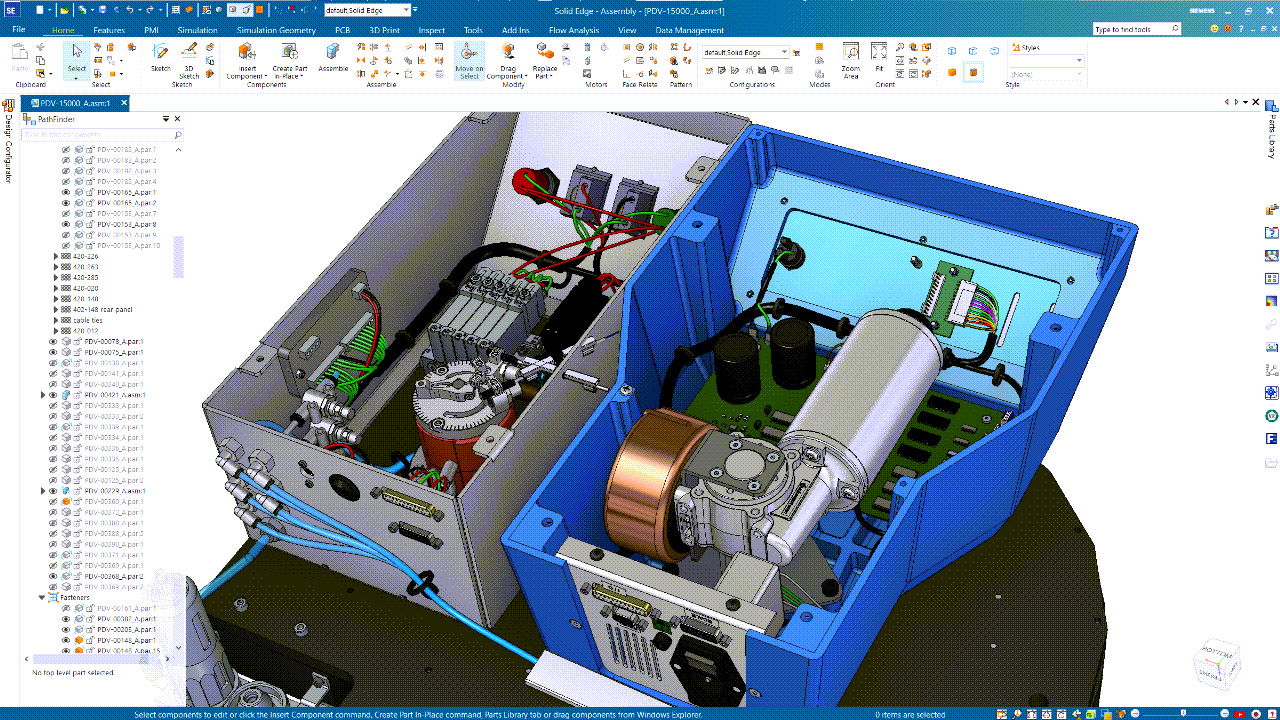Which software is essential for electrical engineering students?

As electrical engineering continues to transform, gaining proficiency in the right software tools is essential for students to succeed academically and professionally. But what software is essential for electrical engineering students to learn? The right software can bridge the gap between theory and application, from designing circuits to simulating complex systems. In this blog, we’ll explore the must-have software tools for electrical engineering students, provide examples of real-world use and share resources to help you get started.
Why do electrical engineering students need specialized software?
Electrical engineering is a field that combines theoretical knowledge with hands-on application, requiring students to design, analyze and optimize electrical and electronic systems. Given the complexity of modern circuits and systems, specialized software plays a crucial role in helping students bridge the gap between theory and real-world implementation.
Software tools provide a virtual environment where students can:
- Visualize and test circuits before physical prototyping
Building physical circuits requires time, resources and materials, making trial and error costly. With simulation software, students can create virtual circuits, test their functionality and identify design flaws early in the process, reducing material waste and improving efficiency. - Simulate system behavior under different conditions
Electrical systems often operate in dynamic environments where factors such as voltage fluctuations, temperature changes and component variations can impact performance. Specialized software allows students to simulate real-world scenarios, ensuring they understand how circuits behave under different loads and conditions before implementing them in practice. - Optimize designs for efficiency and performance
Designing efficient electrical systems requires careful analysis of power consumption, signal integrity, thermal performance and electromagnetic interference. Engineering software provides tools for optimization, enabling students to refine their designs for improved efficiency, reduced energy consumption and enhanced overall performance. - Develop practical skills aligned with industry standards
Mastering industry-standard software gives students a competitive advantage when entering the workforce. - Enhance collaboration and innovation
Modern electrical engineering projects often involve teams working across different locations. Software platforms facilitate collaboration by allowing students to share designs, run simulations remotely and integrate feedback in real-time, mirroring industry workflows.
By leveraging specialized software, electrical engineering students not only gain a deeper understanding of theoretical concepts but also develop essential problem-solving skills that are directly applicable in the industry. These tools prepare students to design cutting-edge solutions, innovate in their field and contribute effectively to engineering projects.
Which software is essential for electrical engineering students?
Siemens offers a range of specialized software tools that are highly beneficial for electrical engineering students. These tools facilitate the design, simulation and analysis of electrical systems, providing practical experience with industry-standard applications.
Below is a list of software tools available to all students via free downloads. While this is only a small selection of our portfolio, it’s a great place for electrical engineering students to get started. If you’re interested in exploring the full range of Siemens software, ask your professors to consider applying today for a Siemens software grant, which allows your class to access the entire range of our products.
Electrical engineering software available as a free download for students:
- PADS Professional: A comprehensive tool for advanced printed circuit board (PCB) design and analysis. It provides engineers with tools for schematic design, layout, simulation and analysis, enabling efficient and high-quality PCB development. It is commonly used for complex electronics design, offering features like signal integrity analysis, 3D design visualization, and advanced routing capabilities.
- Simcenter Amesim: A multidomain system simulation software that supports model-based systems engineering, useful for analyzing complex electrical systems such as energy systems, batteries, electric drives and control systems. Simcenter Amesim also allows for simulating the interaction of these systems with other physical domains.
- Simcenter Femap: A finite element analysis (FEA) modeling solution that allows for detailed simulation of electrical components’ structural behavior under various conditions.
- Simcenter FloEFD for Solid Edge: As a computational fluid dynamics (CFD) application, Simcenter FloEFD for Solid Edge enables thermal simulation of electronic components.
In addition to the above tools, Simcenter 3D, Simcenter STAR-CCM+ and Simcenter HEEDS will also be available for students to download soon.
By utilizing these tools, electrical engineering students can enhance their understanding of circuit design, system simulation and performance optimization, aligning their skills with current industry practices.
Critical future-ready skills for electrical engineering students
To thrive in the real world, electrical engineering students must develop a mix of technical, analytical and professional skills. These skills help bridge the gap between academic learning and practical application in areas such as electronics, power systems, automation, telecommunications and embedded systems.
Technical skills
These skills form the foundation of electrical engineering expertise.
a) PCB design & layout
- Why it’s important: Nearly every electronic device — from consumer gadgets to industrial automation — relies on printed circuit boards (PCBs). Understanding PCB design ensures that engineers can create efficient, compact and manufacturable circuit layouts while considering power distribution, thermal management and signal integrity.
- Tool: PADS Professional – A comprehensive tool for PCB design and analysis, enabling students to create and evaluate PCB layouts.
b) Embedded systems & microcontrollers
- Why it’s important: Embedded systems are at the core of smart devices, automation and IoT technology. Engineers who understand how to integrate hardware with firmware programming can design efficient and optimized microcontroller-based applications for industries such as automotive, healthcare and industrial automation.
- Tool: Solid Edge – Provides capabilities for designing and simulating components and systems that integrate with microcontrollers, supporting embedded system development. From digital validation of individual parts and assembly designs and finite element analysis (FEA) to fully embedded computational fluid dynamics (CFD), Solid Edge includes robust simulation capabilities.
c) Control systems & automation
- Why it’s important: Control systems are critical in robotics, industrial automation, power grids and autonomous vehicles. Engineers must be able to develop and analyze control mechanisms to optimize system performance, efficiency and safety in real-world applications.
- Tool: Simcenter Amesim – A multidomain system simulation software that supports model-based systems engineering, useful for analyzing complex control systems such as energy systems, batteries, electric drives and control systems.
d) Design of electronic components
- Why it’s important: Designing electronic components is crucial to ensuring functionality, efficiency and reliability in modern electrical systems, as they form the backbone of devices from consumer electronics to industrial equipment.
- Tool: Simcenter Femap – Simcenter Femap plays a vital role in this process by enabling engineers to perform multi-physics simulations, optimizing the structural, thermal and electromagnetic behavior of electronic components to ensure performance and durability.
Software & programming skills
Engineering roles increasingly require software proficiency.
Programming languages
a) C/C++
- C and C++ are the backbone of embedded systems programming, making them indispensable for engineers working with microcontrollers, real-time systems and hardware-software integration. These languages are widely used in firmware development, IoT devices, robotics and automotive control systems. Engineers skilled in C/C++ can write efficient, low-level code that optimizes hardware performance, ensuring systems run smoothly with minimal resource consumption.
Problem-solving & analytical thinking
a) Critical thinking
- Electrical engineers frequently encounter design challenges, system malfunctions and unexpected performance issues. Critical thinking helps engineers analyze circuit behavior, identify the root cause of errors and implement efficient solutions. This skill is vital for optimizing system performance, troubleshooting hardware and software integration and ensuring that engineering solutions are both innovative and practical.
b) Numerical analysis
- Many electrical engineering applications rely on complex mathematical models, from power distribution networks to wireless communications and control systems. Engineers must apply numerical analysis techniques to simulate real-world behavior, optimize system efficiency and predict outcomes under different conditions. Mastery of numerical analysis allows engineers to fine-tune power grids, improve signal processing algorithms and enhance automation systems for precision and reliability.
Professional & soft skills
a) Project management
Time management
- Engineering projects — whether in circuit design, embedded systems or industrial automation — operate under strict deadlines. Engineers must balance multiple tasks, meet milestones and ensure timely delivery of projects without compromising quality. Strong time management skills allow engineers to prioritize tasks effectively, improve productivity and manage complex project schedules efficiently.
Budgeting & cost analysis
- Electrical engineers working on product development, manufacturing or energy systems must understand cost constraints to design economically viable solutions. Knowing how to budget for materials, labor and equipment ensures that projects remain financially feasible while maintaining optimal performance and quality standards.
b) Communication & collaboration
Technical documentation
- Engineers must document their designs, simulations and test results in a way that is clear, accurate and reproducible. Whether creating circuit schematics, system specifications or troubleshooting guides, technical documentation is crucial for ensuring knowledge transfer, meeting regulatory standards and collaborating effectively across teams. Well-documented projects also simplify maintenance, upgrades and troubleshooting in the long term.
Team collaboration
- Electrical engineers frequently work with mechanical engineers, software developers, project managers and clients to develop integrated systems. Strong collaboration skills ensure efficient teamwork, smooth communication and effective problem-solving across different disciplines. Engineers who can communicate ideas clearly, contribute to discussions and adapt to team dynamics are more successful in delivering complex, multidisciplinary projects.
Staying updated
- Electrical engineering is a rapidly evolving field, with advancements in AI, IoT, renewable energy and automation transforming the industry. Engineers must stay informed about emerging technologies, evolving industry standards and cutting-edge research to remain competitive. Continuous learning ensures that engineers can adopt new methodologies, integrate innovative solutions and future-proof their skill sets.
Learning new tools
- The tools and software used in electrical engineering are constantly advancing. Engineers must learn and adapt to new design, simulation and testing software to stay efficient and relevant in the field. Whether mastering new programming languages, hardware development platforms or simulation tools, continuous learning enables engineers to enhance productivity, improve design capabilities and stay ahead of industry trends.
By focusing on these technical, analytical and professional skills — and utilizing Siemens software tools — electrical engineering students can build a strong foundation for a successful career in fields such as power systems, embedded systems, automation and telecommunications.
FAQs
Q: How do I access Siemens software for free as a student?
A: Siemens offers free access to its software tools for students. Visit the Siemens academic software page to download and start using industry-standard tools.
Q: Which Siemens software should I prioritize as a beginner in electrical engineering?
A: Start with tools like Simcenter for system-level simulation and Solid Edge for circuit design. These provide a strong foundation for advanced learning.
Q: Are Siemens certifications available for electrical engineering students?
A: Yes! Siemens offers certifications to validate your proficiency in tools like Simcenter and Solid Edge, boosting your employability.
How to get started
- Download Siemens software: Visit the academic software page to access free versions of Siemens tools.
- Learn the basics: Explore the Siemens Xcelerator Academy for tutorials and resources.
- Earn credentials: Sign up for Siemens certification programs to showcase your skills.
Conclusion
Developing essential software tools like Siemens Simcenter and Solid Edge is a critical step for electrical engineering students. These tools not only enhance your academic projects but also prepare you for real-world challenges in industries ranging from automotive to consumer electronics.
Start your journey today by exploring Siemens’ free academic software offerings and unlock your potential as a future-ready electrical engineer!




